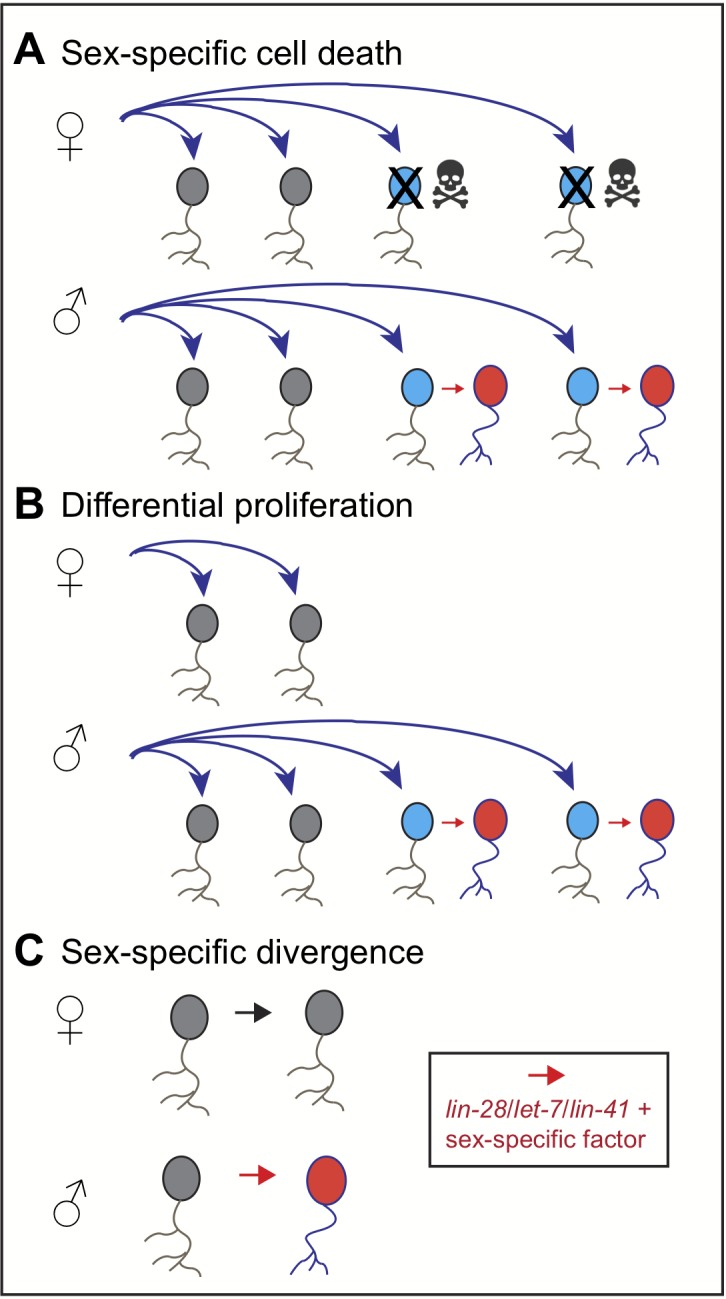Figure 1. Sexual dimorphism in neurons.

The sex of an animal can modify the development of sex-specific neurons in several ways. (A) Male and female animals may develop the same type of neurons (shown in grey), but over the course of development, one sex (females in this case) may lose some of the neurons (blue) due to programmed cell death (skulls). The neurons of the other sex (male neurons in this case) then acquire sex-specific features (red). (B) Input from the sex-specific pathway can modify the number of cell divisions, producing extra neurons (blue) in one sex, which then acquire their sex-specific features (red). (C) Alternatively, neurons can develop sex-specific features that affect their shape and/or properties (red). In C. elegans, this is mediated by combination of the heterochronic pathway (which involves the genes let-7, lin-28 and lin-41) and sex-specific genes, such as lin29a or homologs of doublesex.
